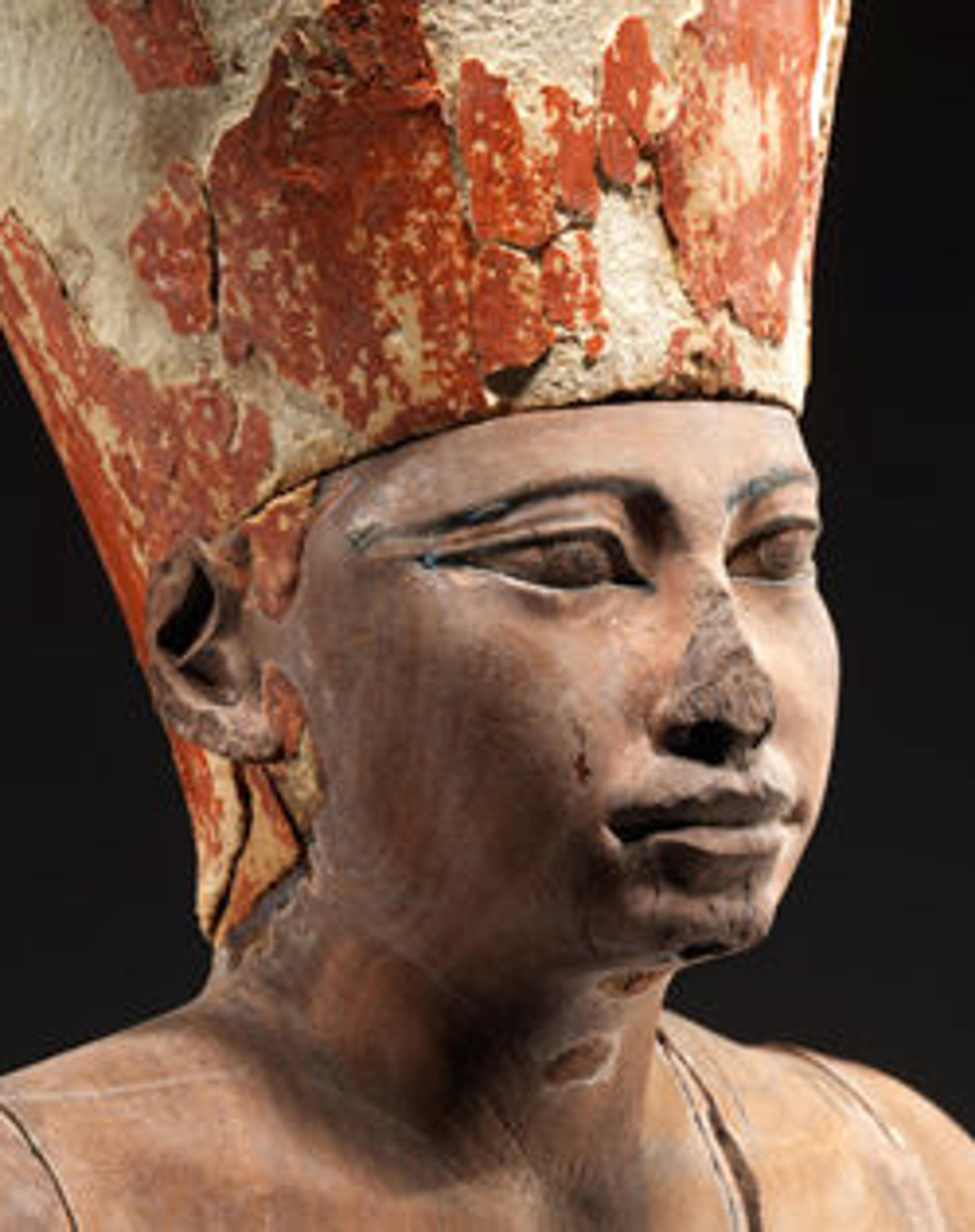Scarab of the Overseer of the Troops Sebeknakht
Scarabs bearing the names of nonroyal individuals first appeared in the later Twelfth Dynasty, concurrent with other significant cultural and political developments. Thereafter scarabs were mass produced, primarily as amulets, though they often also functioned as administrative seals. Scarab beetles lay their eggs in round balls of dung from which their young emerge, actions that the ancient Egyptians equated with the sun god and rebirth, appropriate symbolism for amulets that were often placed in tombs.
Link to a blog about soldiers in Ancient Egypt
In Honor of Pharaoh's Fighters
Link to a blog about soldiers in Ancient Egypt
In Honor of Pharaoh's Fighters
Artwork Details
- Title:Scarab of the Overseer of the Troops Sebeknakht
- Period:Middle Kingdom
- Dynasty:Dynasty 13
- Date:ca. 1760–1670 B.C.
- Geography:From Egypt
- Medium:Glazed steatite
- Dimensions:L. 2.7 cm (1 1/6 in.); W. 1.9 cm (3/4 in.); H. 1.1 cm (7/16 in.)
- Credit Line:Theodore M. Davis Collection, Bequest of Theodore M. Davis, 1915
- Object Number:30.8.669
- Curatorial Department: Egyptian Art
More Artwork
Research Resources
The Met provides unparalleled resources for research and welcomes an international community of students and scholars. The Met's Open Access API is where creators and researchers can connect to the The Met collection. Open Access data and public domain images are available for unrestricted commercial and noncommercial use without permission or fee.
To request images under copyright and other restrictions, please use this Image Request form.
Feedback
We continue to research and examine historical and cultural context for objects in The Met collection. If you have comments or questions about this object record, please contact us using the form below. The Museum looks forward to receiving your comments.
